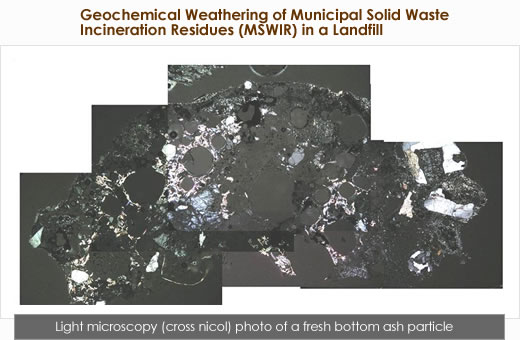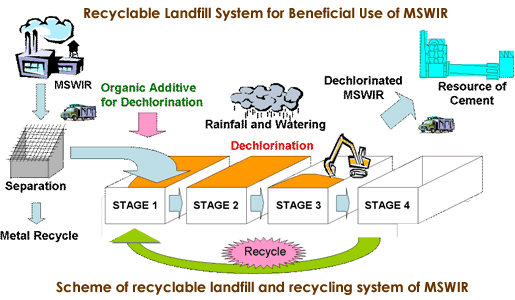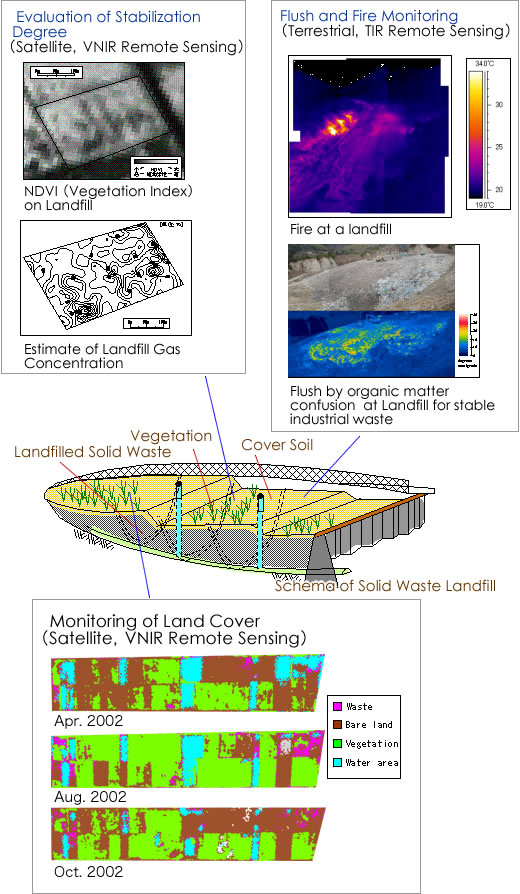


Professor Takayuki Shimaoka
Associate Professor Hirofumi Nakayama





The most promising among the recycle of incineration residual substances is the substitute material of cement, which can be used in large quantities. The only obstacle in those cases being chlorine in the incineration residual substances. By mixing the compost of waste origins containing microbes (dechlorination accelerator) with incineration residual substances, let it ferment and washed by natural rain etc., this research has succeeded in dissolving the Friedel salt, which is a poorly soluble chlorine, and proved that the level of chlorine component content in incineration residual substances could be decreased to about 0.02%. Furthermore, the research continues towards the proof of this technology seed through in-field examinations, and is aimed at creation of the recycling system for incineration of residual substances centering on resource circulation base R/L [new concept of resource circulation plant: Recyclable Landfill].


The new monitoring methodology by remote sensing for appropriate management of wastes is examined. In order to evaluate the degree of stabilization of wastes in large-scale reclaimed land by satellite remote sensing, indicator of the degree of stabilization of wastes measured by reclamation gas and heat generated from wastes under a soil cover, and its relation to vegetable activity rate on the surface of a soil cover is analyzed. Technique of indirectly assuming the degree of stabilization of the wastes of reclaimed land by monitoring the vegetable activity ratio (NDVI: Normalized Difference Vegetation Index) from an artificial satellite is proposed.
